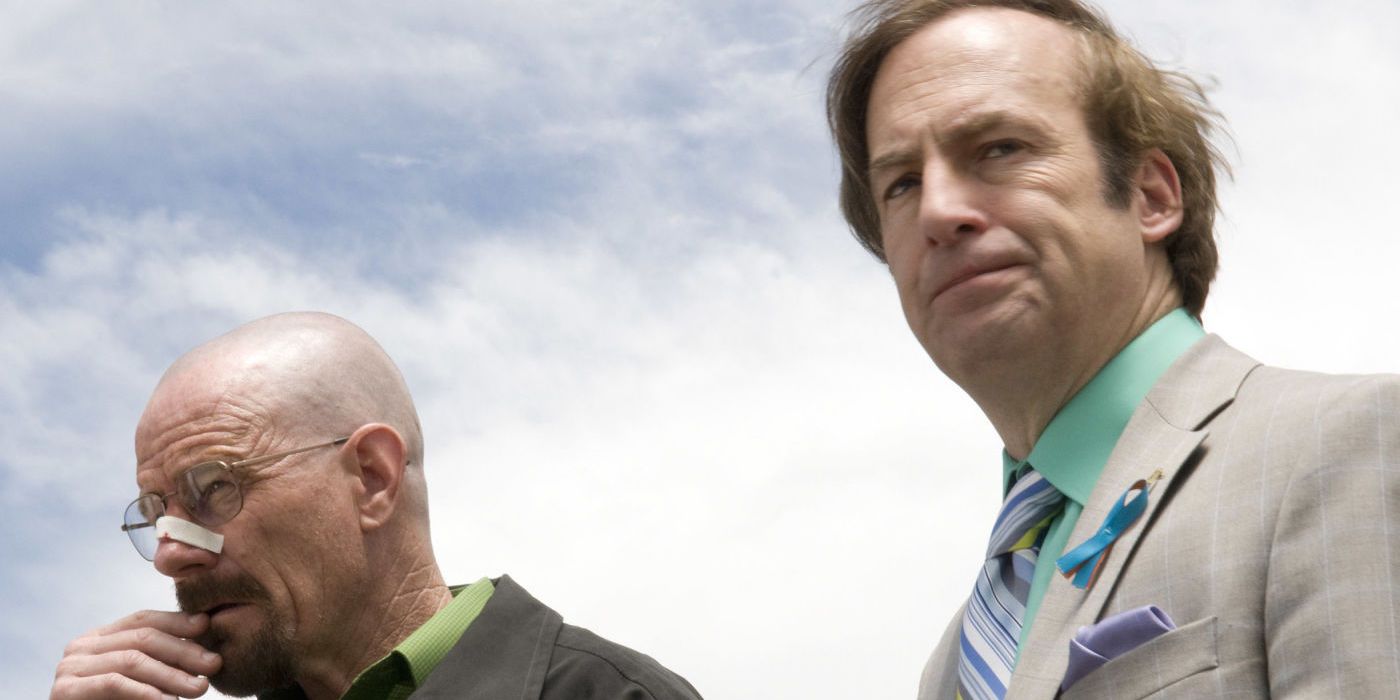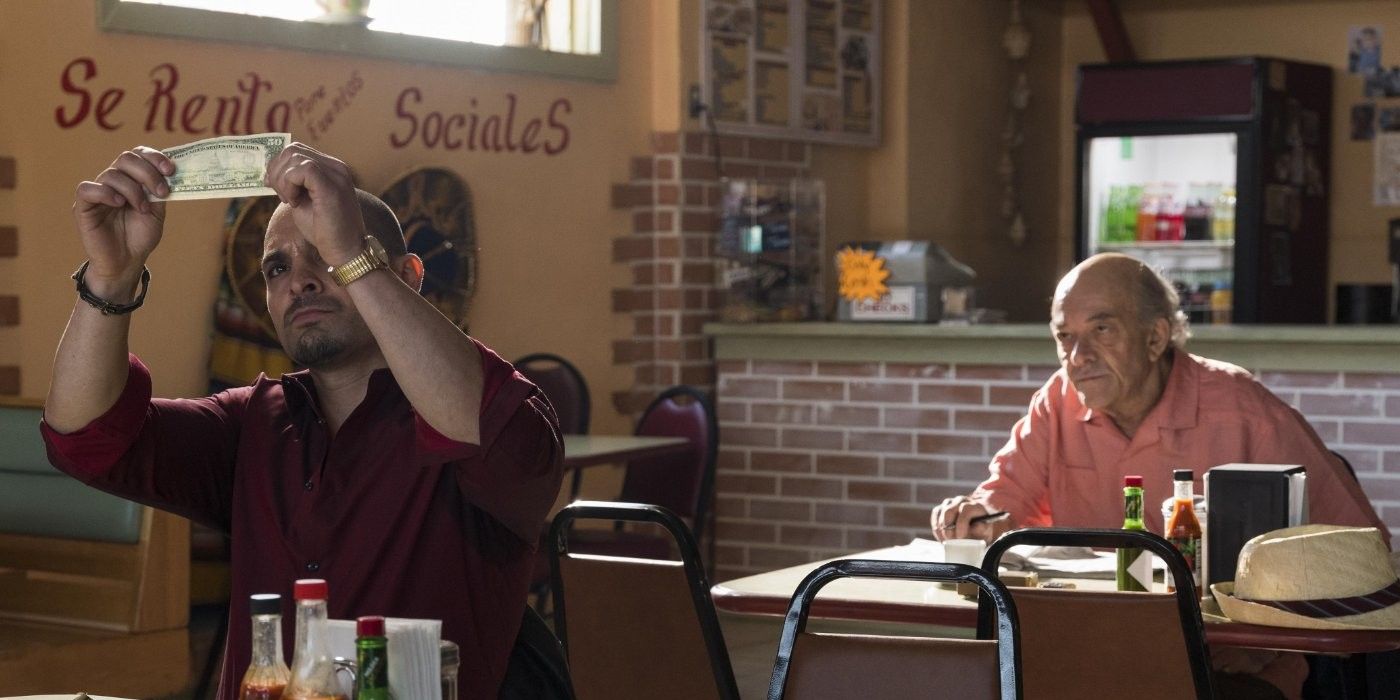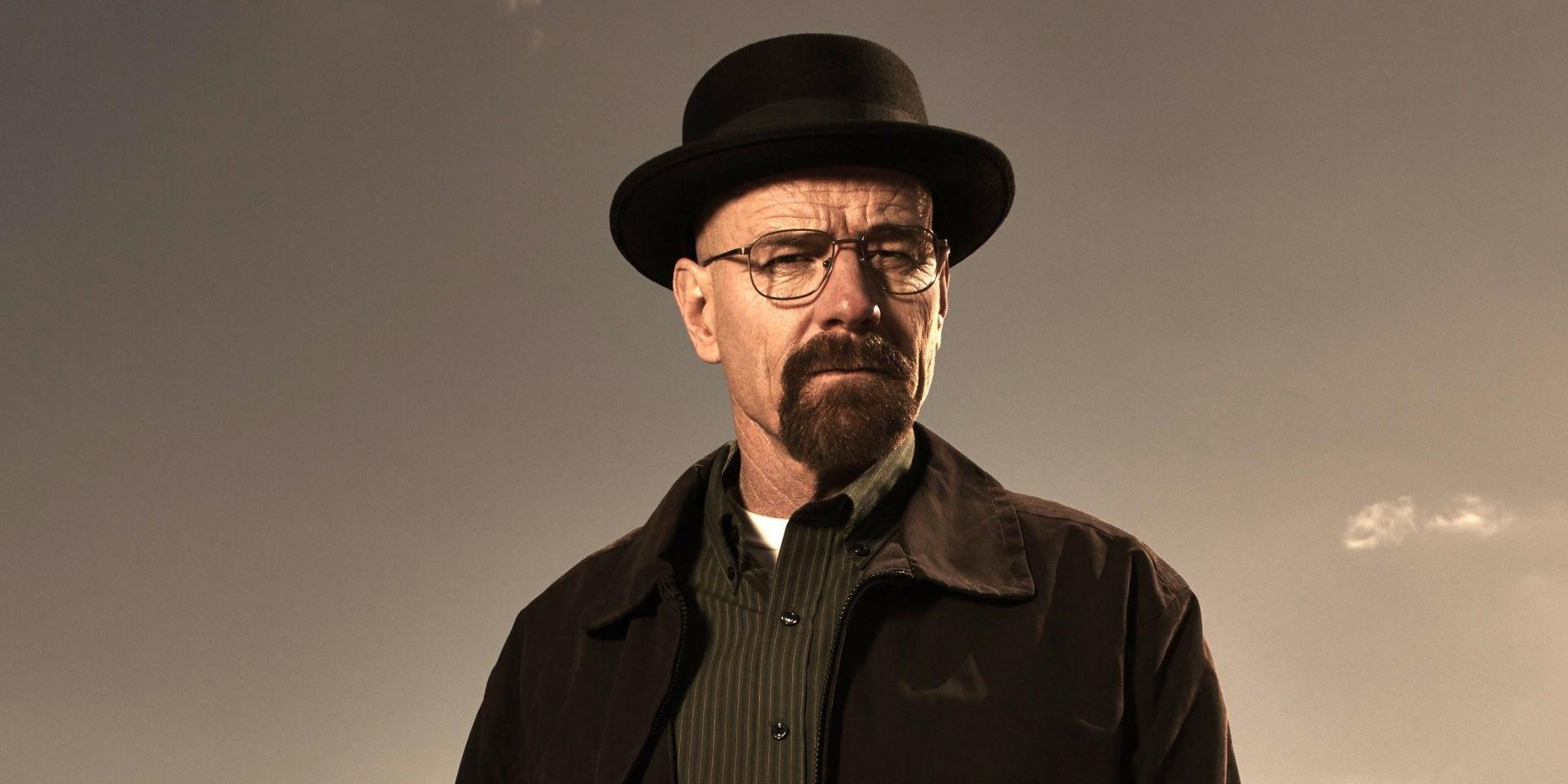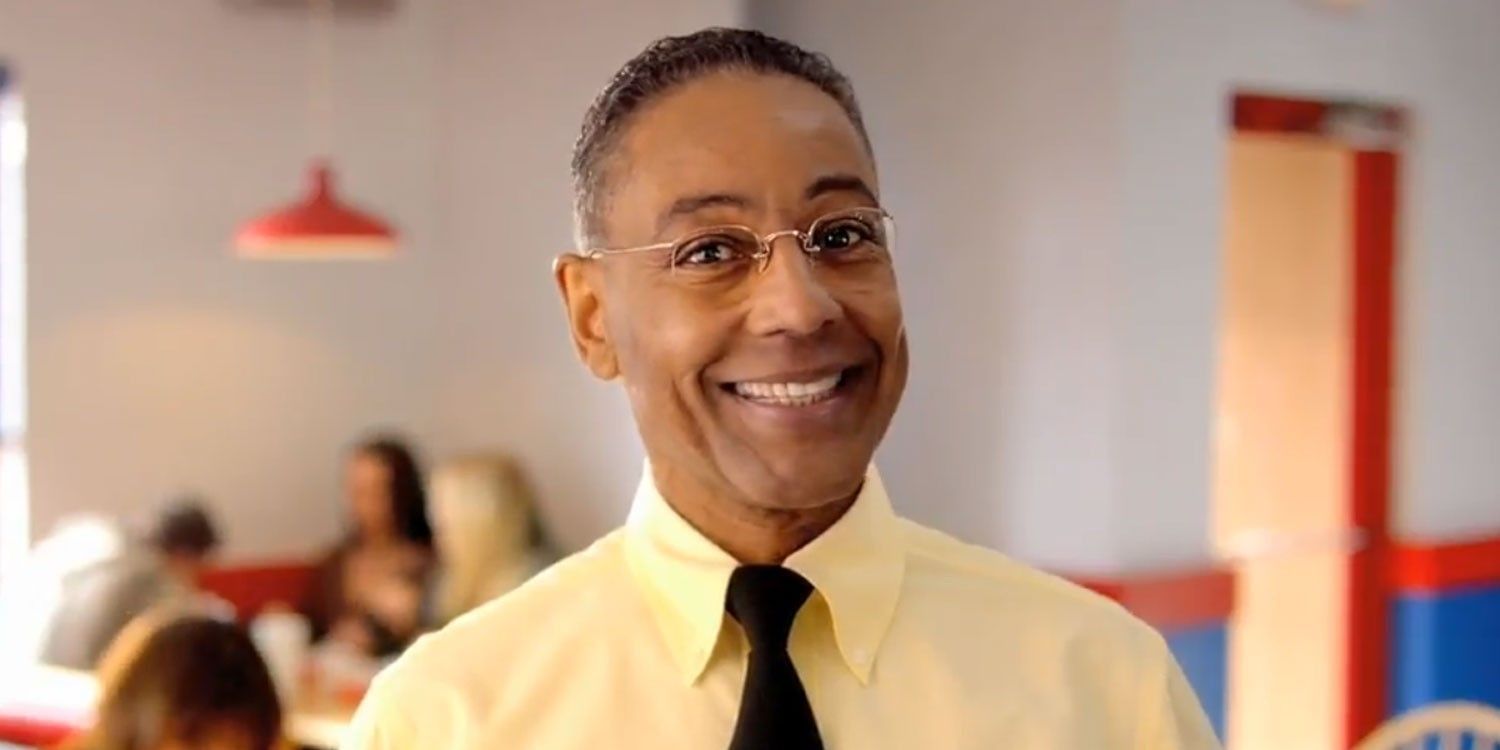Warning: SPOILERS ahead for Better Call Saul
It's no understatement to claim that Breaking Bad may just be one of the best pieces of drama ever to grace a television screen. The tragic tale of a mild-mannered chemistry teacher slowly transforming into an international drug kingpin was nothing short of essential viewing and the rich, colorful supporting characters only served to elevate the series further towards legendary status. As such, the announcement of Better Call Saul, a spinoff series focusing on Bob Odenkirk's Saul Goodman and Jonathan Banks' ever-pragmatic Mike, was met with no small amount of anticipation.
It's easy to be skeptical about spinoffs. After all, even the most hardcore M*A*S*H fan would have to admit that AfterMASH was a bit of a disappointment, and as iconic and popular as Friends was, Joey was terrible. But there are examples of TV spinoffs succeeding in their own right. Bates Motel has done a great job of expanding the Psycho story after a shaky debut season and Frasier - a spinoff of Cheers - quickly garnered a lofty reputation among fans and critics.
Happily, Better Call Saul falls firmly into the latter category and the show's recently concluded third season has cemented its status as a shining example of how to successfully execute a spinoff series. Unsurprisingly, season three's success can be partly attributed to a gradual and subtle shift towards the same kind of tone and themes that made Breaking Bad a worldwide phenomenon. But while being a carbon copy of your predecessor can often kill a spinoff series, Better Call Saul continues to find the perfect balance between honoring the franchise's former glories and remaining unique and compelling in its own right.
The Path To Crime
One of the biggest evolutions Better Call Saul has experienced during its run are the stories, which have slowly moved from studying the career of a struggling lawyer to exploring the heart of South-West U.S. criminality. The show's debut season was largely concerned with Jimmy McGill's legal shenanigans and was also tasked with introducing characters such as Chuck, Jimmy's older brother, and Kim, a fellow lawyer and an old friend of Jimmy's, as well as re-introducing Mike Ehrmantraut from Breaking Bad. There were flashes of criminality thanks to the fleeting re-appearance of Tuco Salamanca and the exploits of local gangster Nacho but these were very much subplots to the relatively more mundane goings on in Jimmy's life.
However, season two ventured down a path far more familiar to Breaking Bad fans. The world of Nacho and the Cartel was greatly developed and the return of Hector Salamanca ensured Better Call Saul was firmly entrenched within the criminal underworld of Albuquerque. As for Jimmy McGill himself, the character's Saul Goodman persona was slowly beginning to emerge, with the season seeing the lawyer pull a sizeable fraud scam in order to cheat his brother out of a significant legal client and have his partner Kim receive the job instead - an act that indirectly leaves Chuck hospitalized.
With its third season, Better Call Saul has fully embraced the show's burgeoning shift towards crime drama, both in Jimmy and Mike's narratives. With Breaking Bad arch-villain Gustavo Fring joining the cast, the New Mexico drug world has been fully cracked open, even giving fans an insight into the early days of famous legitimate-front chicken joint, Los Pollos Hermanos. Jimmy is also more treacherous than ever - even if he still has viewers firmly cheering him on - and debuted his Saul Goodman moniker in a super-cheesy TV commercial. The season's events find Jimmy in legal trouble for his actions against Chuck, a situation the younger McGill brother escapes from by utterly destroying his sibling's reputation. Heartbreakingly, Jimmy also manages to ruin the life of poor elderly care home resident Irene, turning the old woman's friends against her for his own financial gain.
Clearly, the more everyday and legal based plots are being edged out in favor of grittier and more Breaking Bad-like crime material.
The Heisenberg Effect
It isn't just the scripts and story-lines that are becoming increasingly reminiscent of Better Call Saul's predecessor, however; the character themes are too.
When the spinoff first aired, it wasn't immediately clear what kind of story was being told. Fans knew that the show would chronicle the early days of Saul Goodman but had little idea of how this journey would unfold exactly. It has now become clear that much like Breaking Bad told the story of Walter White's transformation from every-man to criminal thanks to a series of tragic events, Better Call Saul is charting a similar journey for Jimmy McGill.
This became even more obvious with the death of Chuck in the season three finale, an event Jimmy indirectly contributed to, even if he didn't cause or intend for it to happen. Walter White's descent into Heisenberg can be broken down into a series of decisions - some big, some small - that eventually had huge direct or indirect consequences. For instance, Walt allows Jane to die of a drug overdose, indirectly killing her. This, in turn, results in her father causing a plane crash and although Walt had no way of knowing this would happen, events such as these are pivotal in his transformation.
Jimmy McGill is now rapidly heading down a similar path. Although he was only trying to aid his girlfriend's career, the moment Jimmy altered the Mesa Verde legal documents in order to discredit Chuck and HHM, he began a chain of events that ultimately caused his brother's death. Undoubtedly, this will have seismic consequences for Jimmy in season four and it's a safe bet that Chuck's demise will act as a catalyst for the full Saul Goodman transformation.
Stranger Frings
Of all the parallels that can now be drawn between Breaking Bad and Better Call Saul, perhaps the most obvious is the aforementioned arrival of Gus Fring and with him comes the origin story to the entire crime world fans saw Walter White dominate previously. Subsequently, Better Call Saul's original remit of showing fans how Saul Goodman came into being has now evolved into depicting how the whole New Mexico drug landscape of Breaking Bad developed in the years prior.
The Salamanca group play a central role in the plot, essentially covering Hector's backstory. Gus Fring is slightly less self-assured than the character who faced off against Walter White, giving him some early character development. And in every episode, viewers see Mike Ehrmantraut display yet another useful skill that makes him such a valuable asset to the criminals of the franchise. Essentially, the nearer Better Call Saul's timeline gets to that of its parent series, the more fans begin to see the various elements that made up Breaking Bad falling into place.
-
As mentioned previously, sticking too closely to the format of a parent series is a common and costly mistake many spinoff shows have made over the years but it's important to stress that this is not the case for Better Call Saul. Vince Gilligan and Peter Gould's creation spent two seasons being a compelling, crime-tinged legal drama with fascinating characters and scintillating dialogue. The show unquestionably confirmed itself as a more-than-credible television entity and earned the right to decide whether to keep going down its own new path or shift into a more Breaking Bad-esque gear. Clearly, Better Call Saul has chosen the latter and this was most likely always the intention.
Furthermore, the brief glimpses of Jimmy McGill's post-Walter White life as Gene suggest that the show may, in the future, become a sequel rather than a prequel and if this is indeed the plan, there is little to be gained from shying away from the franchise's past. Naturally, some viewers may dismiss the various cameos and Easter Eggs as unnecessary fan service but when the rest of the show is so high in quality, does it really matter? And anyway, what Breaking Bad fan didn't crack a smile when Huell turned up?
Crucially, the only factor that truly matters is quality. Better Call Saul may not have the viewing figures of Breaking Bad but it certainly has the same sense of being unmissable, masterful television and as long as that continues, it doesn't make a difference whether the show introduces more elements from its past of whether it goes in a different direction altogether. Vince Gilligan and co. are continuing to make superb television within the world of Breaking Bad and as long as that continues, viewers will gladly tune in week after week.




